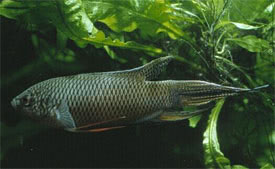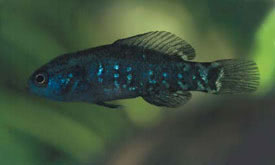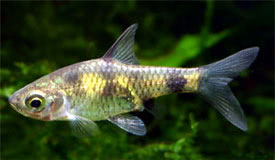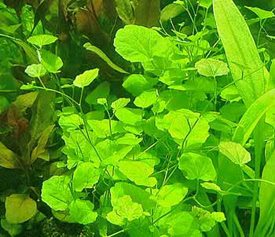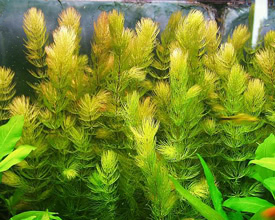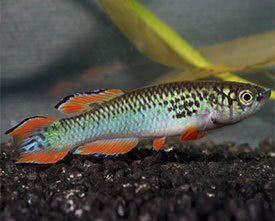
 Magyarul / Hungarian
Magyarul / Hungarian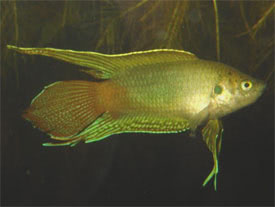
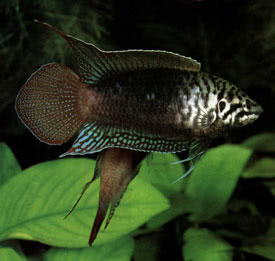
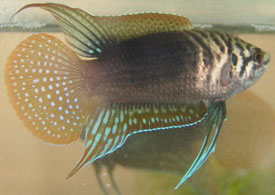
- Scientific name: Macropodus ocellatus
- Synonyms: Polyacanthus paludosus
- Common name: Roundtail Paradise Fish
- Group: Labyrinth fishes
- Habitat:Asia; China, Korea and Japan.
- Size: 8 cm
- Biotope: Inhabits in slow-flowing or still waters, ponds and swamps.
- Social behavior: Though generally peaceful, the fish may harass any similarly-shaped or long-finned tankmates, so it is best kept in pairs in a species tank. Males can be aggressive with each other.
- Diet: Carnivorous; They eat tiny invertebrates and smaller fish in nature. In aquarium they accept live and frozen foods, occassionally dried foods.
- Breeding: Quite easy
- Tank: Minimum 80 litres
- Population: 1 pair for 80 litres
- Decoration: Arrange a densely planted tank for them with some floating vegetation to provide shaded, quiet areas. The aquarium can be decorated with roots and branches. Cover their tank well, as they might jump out. Can easily be kept in a small garden pond during the summer.
- Temperature: 16-24 °C
- pH: 6-7.5
- Hardness: 5.6-11.2 NK°
- Lifespan: 5-8 years
Description: Macropodus ocellatus has a rounded caudal fin where it got its common name. Male is more colorful, has a large orange tail fin and strong blackish vertical stripes on the head and anterior body regions. Female is weaker patterned and somewhat smaller. Male has pointed elongated dorsal and anal fins. On the female these tips only reach to the middle of the tail fin. Macropodus ocellatus and Macropodus opercularis can hybridise, so these fish shouldn’t be kept together. Roundtail Paradise Fish requires a cold water tank with fluctuating temperatures. The fish should be kept in a small garden pond or in an unheated aquarium until the water temperature is over 16 °C. Prolonged periods of constant higher temperatures result in diseases like tuberculosis.
Breeding isn’t too hard, similar to Macropodus opercularis, but is less productive. Arrange a separated tank with fine-leaved and some floating plants. The water level should be lowered to 20 cm and the temperature should between 22 to 24 °C. The tank should have a tight cover as the fry need access to a layer of warm, humid air for the development of their labyrinth organ. The male builds a bubble nest at the surface among the floating plants. After this the male will start to chase the female, and the female change in color to a creamy-white if she is ready to spawn. They spawn under the bubble nest: the male embraces the female’s body with his own body while the eggs and sperm are released. The fretilised eggs float to the bubblenest. After spawning the male guards the eggs, and become intolerant to the female, so she should be removed. The 200-300 eggs hatch in 48 hours, and the tiny fry require very small live foods after they are swimming free (usually another 2-3 days). The male should be removed at this point.




